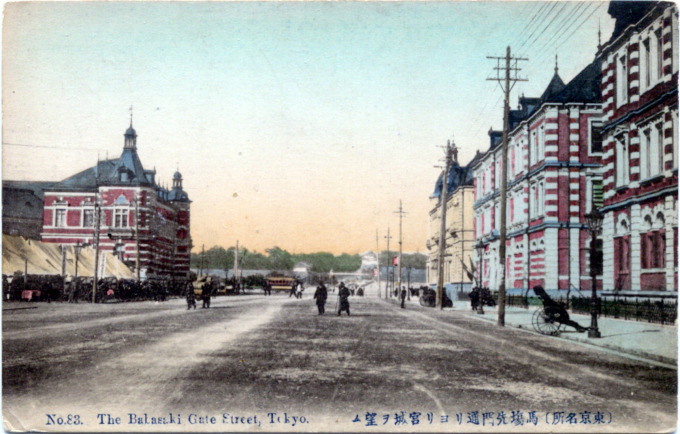
Looking north toward Babasaki and the Imperial Palace, c. 1910. On the right is “London Town”, the first office structures built by Mitsubishi in the Marunouchi business district. London Town would remain standing until the post-war years of the 1960s.
See also:
“London Town”, Marunouchi, c. 1920
“Marunouchi was a terribly dismal place, with a lonely, bleak, desolate air to it, and the Imperial Palace seemed shut away in the clouds. What a change nowadays!
“Now there are tramcars running busily all around the moat, cars speeding about, and occasionaly you even see aeroplanes flying overhead. There is nothing left at all of the old gloom and desolation.
“How it all looks fresh and alive, with the pines of the Imperial Palace, and the spring clouds drifting overhead …”
– “Thirty Years in Tokyo”, by Tayama Katai, 1917 (trans. By Kenneth G. Henshall, 1987)
“Real estate was the second major area of investment for Mitsubishi in the 1880s and early 1890s. Of the ¥2.4 million the company spent, almost ¥2 million went for land in Tokyo … The most famous purchase of all was the Marunouchi district of Tokyo, a vast area opposite the Imperial Palace, which, in the late 1880s, was part grass plain and part military drill field.
“Iwasaki Yanosuke had been strongly urged to buy the land by [his two managers] Shoda Heigoro and Suenobu Michinari, who were in London at the time on business. The modern office center of London led them to dream of creating a similar one in Japan. Yanosuke concurred, and construction planning began soon after the purchase. Mitsubishi’s Building No. 1, completed in 1894 in the English style, was Japan’s first office rental building. Building No. 3, finished in 1896, housed the N.Y.K. head office.”
– Mitsubishi and the N.Y.K., 1870-1914: Business Strategy in the Japanese Shipping Industry, William D. Wray, 1984
- Looking across what is now the imperial palace plaza, c. 1905.
- A similar scene, in summer, c. 1905, with the embryonic Marunouchi business district taking shape in the distance.
Maru-no-uchi [within the (castle) walls] has existed in name since the beginning of the Tokugawa era when the area fringing Edo Castle’s outermost fortifications fronting the Babasaki gate was filled with the estates of daimyo [provincial lord] who were required by the Shogun to spend every other year in the capital. The daimyo were sent home after the fall of the Tokugawa regime in 1867 and, after the threat of civil war was completely eliminated in the years immediately following the Restoration, the former estate grounds were appropriated by the Meiji government.
Miscellaneous buildings in the Marunouchi business district, c. 1930. Clockwise from top: Tokyo Central Station, Marunouchi Building, Central Post Office, Central Telephone Office, Yusen (NYK) Building, Kaijo Building.
On these grounds were first built ministries and military barracks, and a large parade ground was also established. Larger and more suitable land was soon found for these uses (the parade grounds were moved first to Hibiya, then to Aoyama and, finally, Yoyogi) and many of the earliest government ministries were relocated to nearby Kasumigaseki. The Marunouchi land was then sold to the Iwasaki family, founders of Mitsubishi.
- View of Yurakucho from Gaisen Road, c. 1910.
- View of Yurakucho from Gaisen Road, c. 1910. The Tokyo Chamber of Commerce building in on the right.
- Babasaki intersection, with the Tokyo Chamber of Commerce (left) and Imperial Theatre (center), c. 1910.
- Statue of Nanko, Marunouchi, c. 1910.
- Looking toward Marunouchi, from Ginza, c. 1920.
- Marunouchi business district, c. 1930.
- Marunouchi business district, c. 1940. The Tokyo Kaikan is at center; to the left is the Meiji Insurance Co. building.
- A 1947 map and building directory of the Marunouchi and Ginza districts.
Aerial view of Yurakucho and Marunouchi, c. 1970. Seen at center-right are the remaining red-brick “Londontown” buildings, the business district’s first office buildings.
In 1894, the first buildings of what would become known as “Londontown” were built including the headquarters for the Mitsubishi zaibutsu [conglomerate]). With the opening of Tokyo Central Station in 1914, to the north of “Londontown,” what had been considered unusable swampland was turned into prime commercial real estate. By 1922, more than 1/3rd of Japan’s largest companies had already located their headquarters to the Marunouchi business district.
Present-day Marunouchi is roughly defined extending from the Otemachi district in the north to Hibiya Park in the south, and from the Imperial Palace moat east to Tokyo Station. It is still considered to be the prime location for corporate offices in the city.


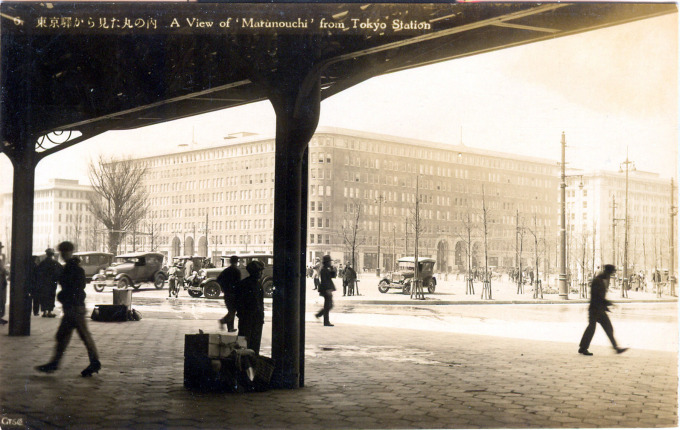
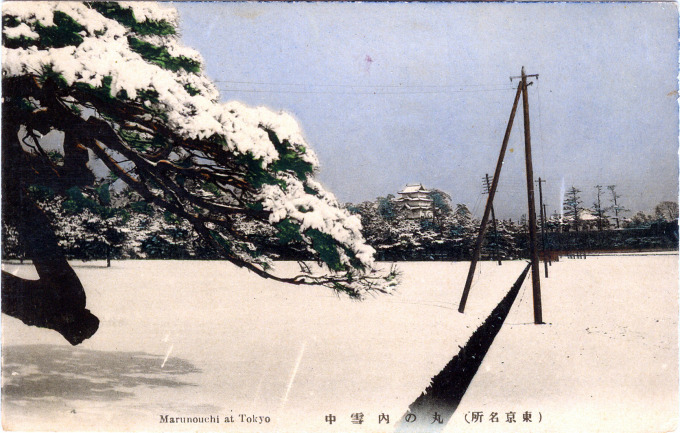
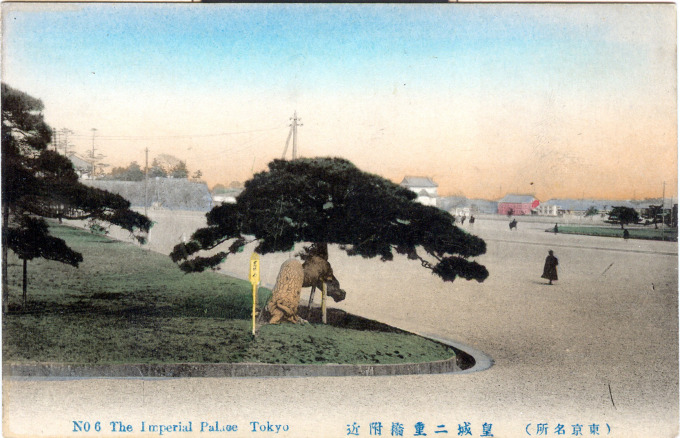
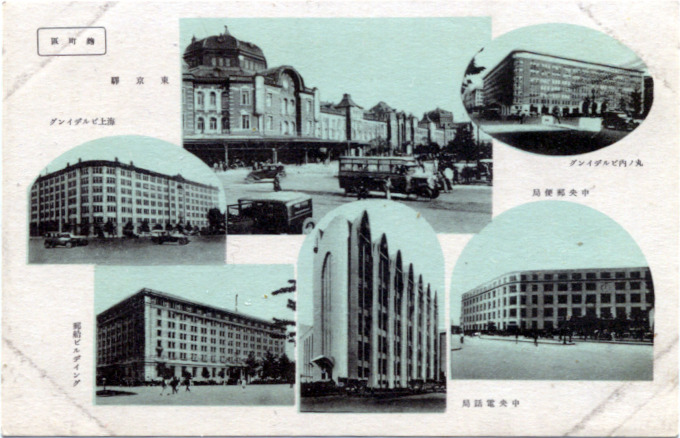
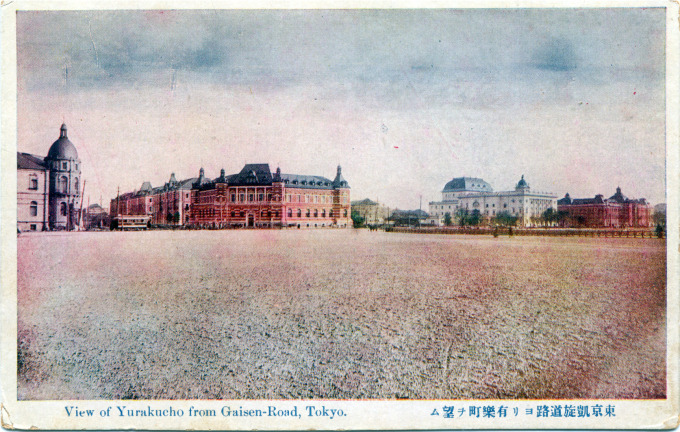
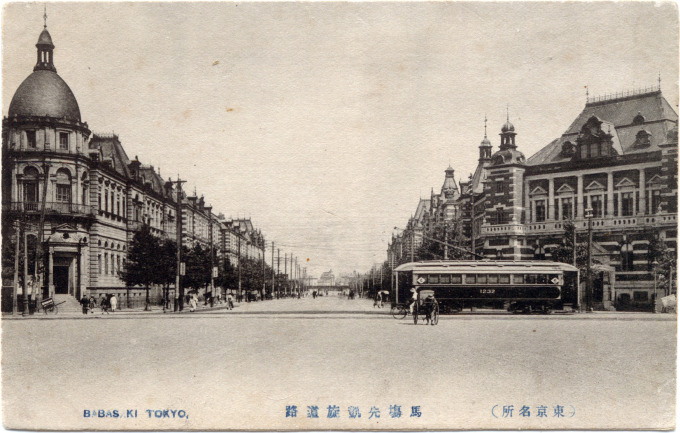
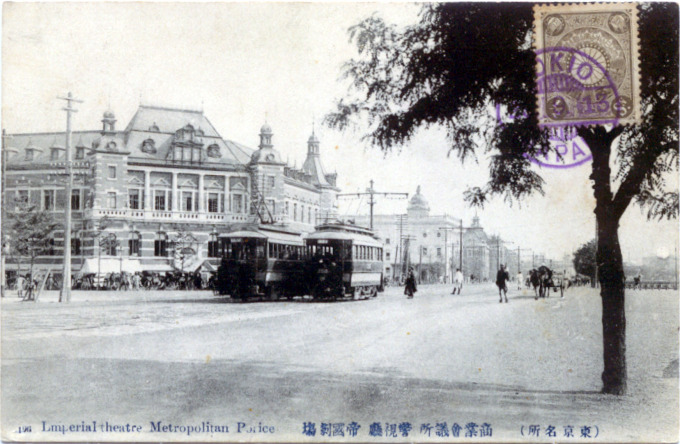
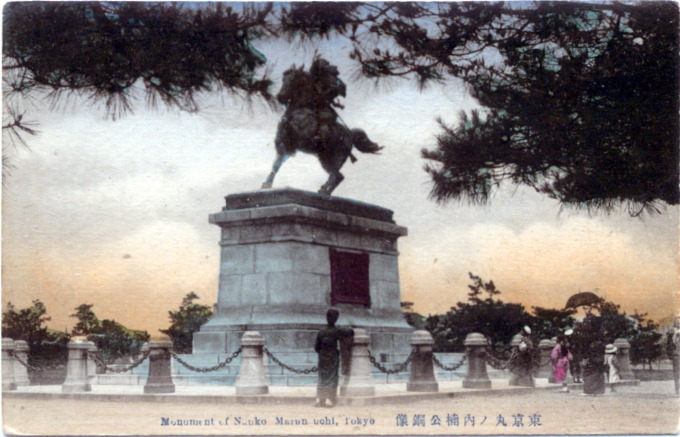
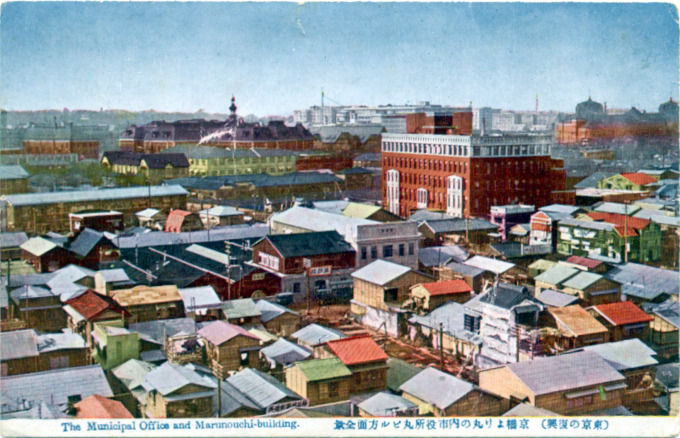

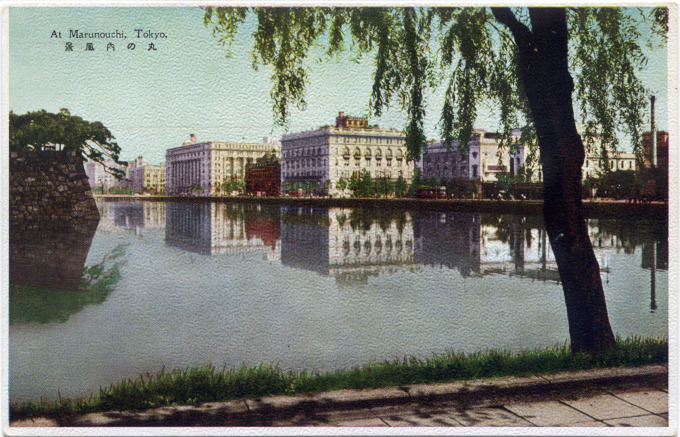
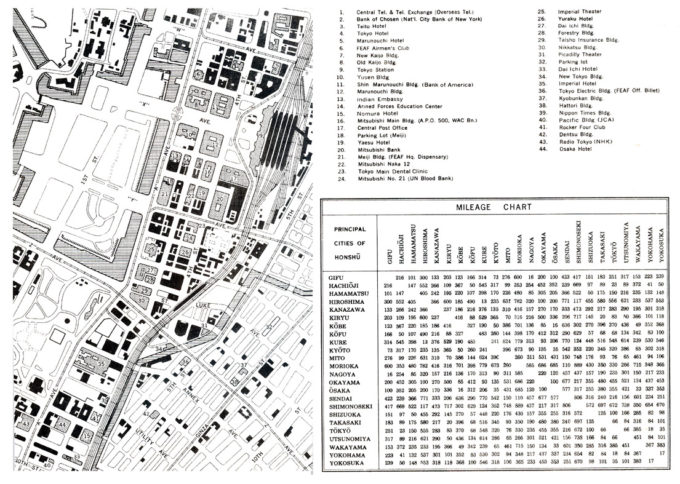
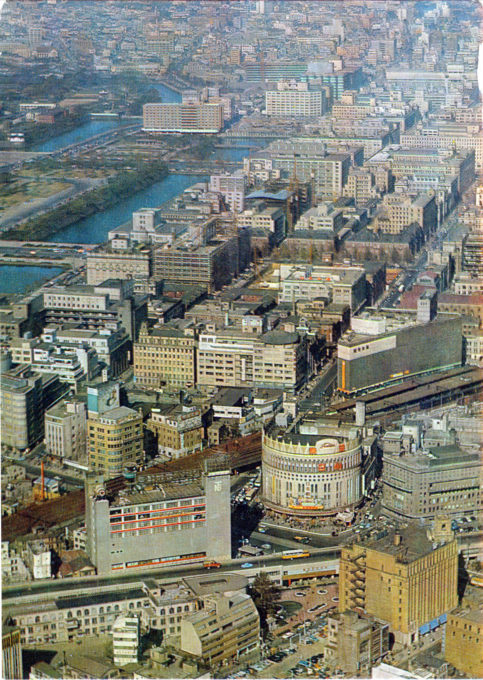
Pingback: “London Town”, Marunouchi, c. 1920. | Old Tokyo
Pingback: Tokyo Station, 1914-1940. | Old Tokyo
Pingback: "Bird's Eye View of Tokyo," c. 1960. | Old Tokyo
Pingback: The Bronze Statue of Masashige Kusunoki, Tokyo, c. 1930. | Old Tokyo
Pingback: Marunouchi at Tokyo, c. 1910. | Old Tokyo